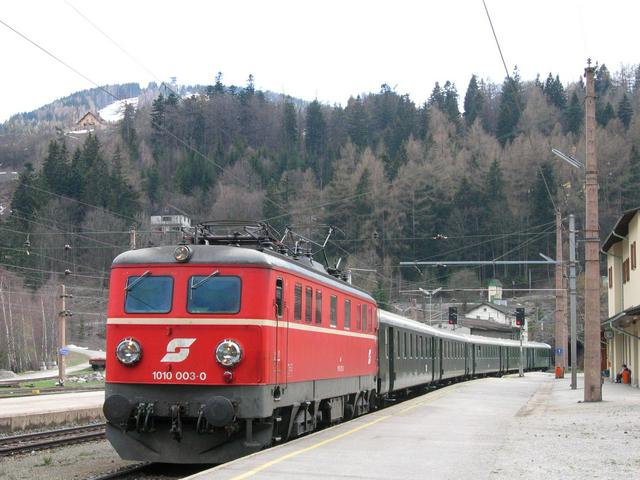 The building of the Semmering Railway encouraged further progress. On 5 May 1842, the first train on the "Südbahn" arrived in Gloggnitz. In its earliest years the railway opened up the mountain scenery to the people of Vienna. Thousands of tourists visited Gloggnitz and went hiking around Vienna's so-called "Home Mountains“, Mount Rax and Mount Schneeberg. In 1854 the railway passage over Semmering was established.
The building of the Semmering Railway encouraged further progress. On 5 May 1842, the first train on the "Südbahn" arrived in Gloggnitz. In its earliest years the railway opened up the mountain scenery to the people of Vienna. Thousands of tourists visited Gloggnitz and went hiking around Vienna's so-called "Home Mountains“, Mount Rax and Mount Schneeberg. In 1854 the railway passage over Semmering was established.
The number of Gloggnitz houses and citizens increased steadily between 1796 and 1836. Prior to the arrival of the railway, the town had a rate of growth of 11% in buildings and 14% in population. Between 1836 and 1876 the rate of new building rose to 142% and there was a huge 284% rise in the local population.
Gloggnitz was granted town status on 5 May 1926. On 2 January 1927 Federal President Dr Michael Hainisch, Federal Chancellor Dr Ignaz Seipel and the then former Chancellor of State Dr Karl Renner addressed a big audience when they granted Gloggnitz the grant of privileges due to a town.
World War II and the unsettled post-war period meant many upheavals in the lives of the citizens of Gloggnitz. There were many structural changes, particularly in relation to the labour market and the development of housing. It took decades until the town regained the opportunity to take measures to boost its tourist industry.
In 1972 Gloggnitz became a member of the Semmering-Rax-Schneeberg Tourism Association. This partnership has been beneficial in promoting Gloggnitz and its surrounding area as sites of interest to both national and international visitors. The more-than-900-year-old town of Gloggnitz is still an important traffic junction in the east of Austria and has not lost any of its geographical significance.
Alongside municipal buildings, the historical monuments of the town are also being constantly cared for and restored. A new town hall was built and opened in September 2003. In 1992 Gloggnitz was the location of Lower Austria's biggest exhibition, the "Lower Austrian Landesausstellung“. The exhibition provided funds for the full restoration of the former monastery. Today Gloggnitz Provostry is used as a "wedding castle" and site for various exhibitions.
